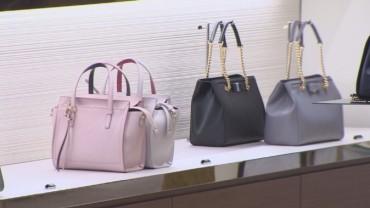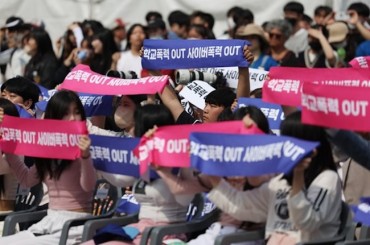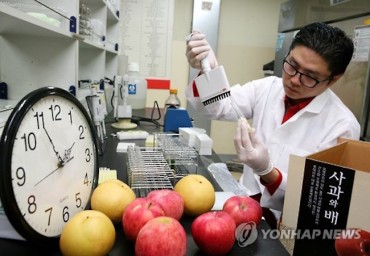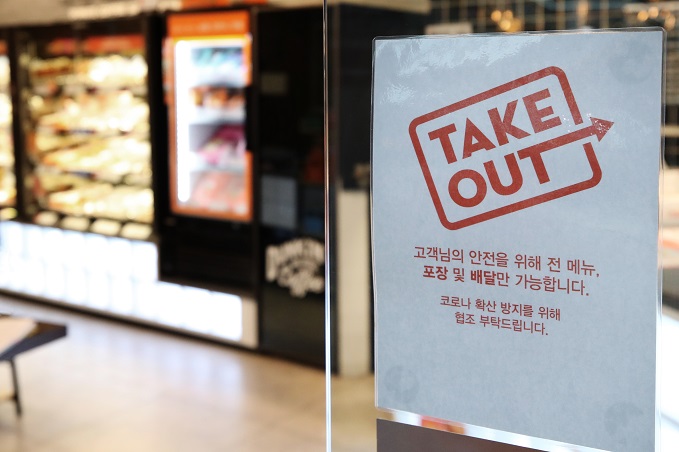
This photo, taken on Sept. 7, 2020, shows a sign at a franchise bakery in Seoul that says only takeaway and delivery are possible as South Korea limited the operation of franchise coffee chains, bakeries and ice cream parlors to only takeout and delivery under stricter anti-virus curbs in the greater Seoul area. (Yonhap)
SEOUL, Sept. 7 (Korea Bizwire) — The number of daily coronavirus cases in South Korea stayed below 200 for the fifth straight day on Monday, but health authorities remain alert over continued sporadic cluster infections across the country.
The country added 119 more COVID-19 cases, including 108 local infections, raising the total caseload to 21,296, according to the Korea Centers for Disease Control and Prevention (KCDC).
It marked a sharp fall from 167 additional cases reported Sunday and the fewest since Aug. 14, when the country identified 103 new infections.
The stricter anti-virus measures have begun to take effect, but the fall in daily virus cases also came as virus tests tend to be fewer over the weekend than weekdays.
South Korea has been struggling to contain a flare-up in virus cases as daily infections have been in the triple digits since Aug. 14 due to cluster infections tied to churches and a large-scale rally in central Seoul in mid-August.
New infections shot up to a five-month high of 441 on Aug. 27 but have slowed on the stricter social distancing measures, which health authorities called a “positive” sign in the virus fight.
“We are not in a situation where we can let down our guard in containing COVID-19. But given that virus patients reached 300-400 per day last month, the spread of the virus has slowed,” KCDC Director Jeong Eun-kyeong said in a briefing.
Jeong said new infections may be falling this week as the country has been implementing tougher social distancing measures since late August.
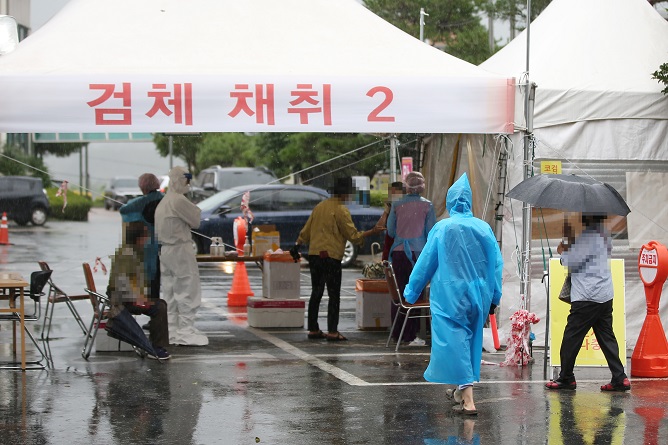
In the midst of the influence of Typhoon Haishen, people visit a state-run clinic in Gurye County, South Jeolla Province, for coronavirus tests on Sept. 7, 2020. (Yonhap)
The country extended the enhanced social distancing scheme by another week from Monday in the greater Seoul area, home to half of the country’s 51 million population. It imposed Level 2.5 measures in the metropolitan area for eight days until Sunday.
Under the tougher virus curbs, eating at restaurants and small eateries is only allowed until 9 p.m. Franchise coffee chains, bakeries and ice cream parlors are permitted to offer only takeout and delivery.
The country also extended its Level 2 social distancing measures across the country by another two weeks until Sept. 20 as cluster infections continued to pop up nationwide.
“We call on people in the capital region not to go outside their homes or have meetings. The risk of infections is high if close contact occurs even at parks or riverside areas,” Yoon Tae-ho, a senior health ministry official, said in a briefing.
Of the newly identified local infections, 47 cases were reported in Seoul and 30 from Gyeonggi Province that surrounds the capital. Incheon, just west of Seoul, reported one more cases.
The capital city has had 4,405 total infection cases.
Other municipalities reported new infections, with the southeastern port city of Busan adding nine cases and the southwestern city of Gwangju reporting seven new infections.
Cases traced to Sarang Jeil Church in northern Seoul, a hotbed of the recent spike in new infections, reached 1,163 as of noon, up one case from the previous day.
The church-tied cases marked the largest cluster infection after more than 5,000 virus cases traced to the minor religious sect of Shincheonji were reported in Daegu in late February and early March.
Cases tied to the anti-government rally in Seoul on Aug. 15 rose five cases to 532.
Infections linked to a logistics call center in eastern Seoul reached 18, up two cases over the past 24 hours, with a few linked to social gathering.
Outside of Seoul and surrounding areas, a total of 16 people who attended a health food business meeting in Daejeon, in the central part of the country, were infected with COVID-19.
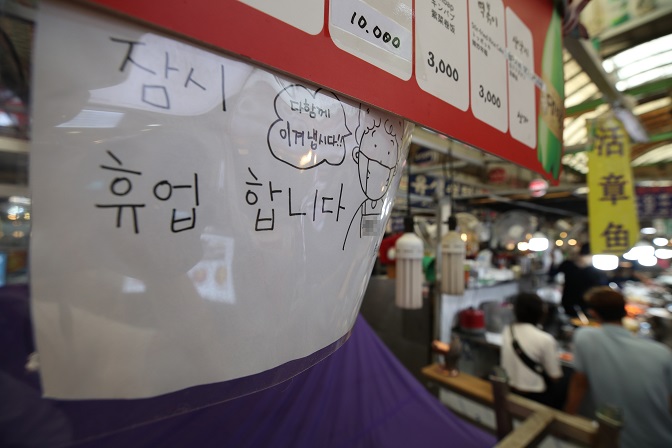
This photo, taken on Sept. 6, 2020, shows a sign about the temporary closure of a store in the traditional Gwangjang Market in central Seoul as small merchants suffer amid a flare-up in new coronavirus cases. (Yonhap)
The KCDC said all of the 74 virus cases that it sequenced in late August were seeded by the so-called GH genetic strain of the new coronavirus.
Since April, the GH clade has been mostly detected in South Korea from a series of cluster infections, including the one tied to a nightlife district in downtown Seoul.
Despite the letup in new cases, health authorities warned against any complacency on concerns that virus infections could rebound due to people’s movements during the upcoming Chuseok fall harvest holiday.
This year’s Chuseok holiday runs from Sept. 30 to Oct. 4. The Korean autumn harvest celebration is one of the country’s biggest traditional holidays and serves as a chance for family members to visit their hometowns.
“We’ve been coming up with measures to bring the virus outbreak under control while keeping the current Level 2 curbs,” Yoon said.
The country, meanwhile, reported 11 imported cases, with three cases coming from the Philippines and another three from India.
South Korea reported two more deaths, raising the death toll to 336. The fatality rate was 1.58 percent.
Over the past two weeks, 25 virus patients died, 24 of whom had underlying health issues, the KCDC said.
Health authorities confirmed two more fatalities later in the day, with both occuring in Seoul. The latest deaths, involving senior citizens in their 70s and 80s, will be reflected in the daily tally on Tuesday.
Growing concerns about a shortage of hospital beds have also emerged. The number of seriously or critically ill COVID-19 patients reached 162 as of midnight, down one from the previous day.
The total number of people released from quarantine after making full recoveries stood at 16,297, up 151 from the previous day.
The country has carried out 2,051,297 coronavirus tests since Jan. 3.
(Yonhap)



